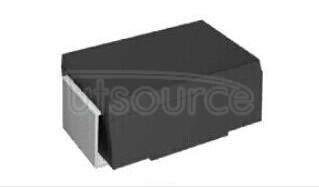Unlock the Secrets of Diodes: Discover the Perfect One for Your Needs!
Diodes are essential components in the world of electronics, serving as the gatekeepers of current flow in circuits. They allow electricity to pass in one direction while blocking it in the opposite direction, making them crucial for various applications, from power supplies to signal processing. In this article, we will explore the different types of diodes available on the market, delve into their functionalities, and provide insights to help you make an informed purchasing decision. Whether you're a hobbyist building a simple circuit or a professional engineer working on complex systems, understanding the nuances of diodes can significantly impact your project outcomes.

Understanding Diodes: The Basics
At their core, diodes are semiconductor devices that allow current to flow in one direction—this property is known as rectification. When a diode is forward-biased, meaning the positive side is connected to the positive voltage and the negative side to the negative, it conducts electricity. Conversely, when it is reverse-biased, it blocks current flow. This simple yet powerful behavior forms the basis for many electronic applications, including rectifiers in power supplies, clippers in signal processing, and more. Knowing how diodes function is vital for anyone working with electronics, as it enables you to design more efficient circuits and troubleshoot potential issues effectively.
Types of Diodes
There are several types of diodes, each with unique characteristics and applications. Here, we will discuss some of the most commonly used diodes, including Rectifier Diodes, Zener Diodes, Schottky Diodes, and Light Emitting Diodes (LEDs). Each type serves a specific purpose and is chosen based on the requirements of a given circuit.
Rectifier Diodes
Rectifier diodes are perhaps the most well-known type, primarily used to convert alternating current (AC) to direct current (DC). They are characterized by their ability to handle high current and voltage levels, making them suitable for power supply applications. A friend of mine once shared how they salvaged a rectifier diode from an old power supply to fix their guitar amplifier, showing how versatile and accessible these components can be. In essence, if your project involves power conversion, rectifier diodes will likely be on your parts list.
Zener Diodes
Zener diodes are designed to allow current to flow in the reverse direction when a specific voltage, known as the Zener voltage, is reached. This unique property makes them invaluable for voltage regulation in circuits. For instance, a colleague of mine once used a Zener diode to stabilize the voltage in a sensitive sensor circuit, ensuring consistent performance despite fluctuations in the power supply. If your application requires precise voltage control, Zener diodes are an excellent choice.
Schottky Diodes
Schottky diodes are distinguished by their low forward voltage drop and fast switching speeds, making them ideal for high-frequency applications. They are commonly used in power supplies and RF applications due to their efficiency. A friend working on a robotics project swore by Schottky diodes for their ability to minimize power loss, which was crucial for battery life in his design. If speed and efficiency are your primary concerns, consider integrating Schottky diodes into your circuit.
Light Emitting Diodes (LEDs)
LEDs are perhaps the most recognizable type of diode, known for their ability to emit light when current flows through them. Beyond traditional lighting applications, LEDs are now used in everything from display screens to signal indicators. Their energy efficiency compared to incandescent bulbs makes them a popular choice for modern lighting solutions. A personal experience with LEDs was when I helped my friend convert her home lighting to LED fixtures, resulting in lower energy bills and longer-lasting bulbs. If you're looking to brighten up your projects in an eco-friendly way, LEDs are a fantastic option.
Choosing the Right Diode for Your Needs
Selecting the right diode involves considering several factors, including voltage ratings, current ratings, and the specific requirements of your application. It's essential to match the diode's specifications to your circuit's needs. For instance, if you're working on a circuit that requires low voltage drop and fast switching, a Schottky diode would be appropriate. On the other hand, if your project demands stable voltage levels, a Zener diode would be more suitable. Additionally, understanding the thermal characteristics of diodes—how they dissipate heat—can play a crucial role in ensuring reliability and longevity in your designs. Taking the time to assess these factors can lead to better performance and fewer issues down the line.
Final Thoughts on Diodes and Their Impact
In summary, diodes are vital components in electronic circuits, with various types serving different purposes. From rectifying AC to DC with rectifier diodes, regulating voltage with Zener diodes, achieving efficiency with Schottky diodes, to illuminating spaces with LEDs, understanding these differences is key to making the right purchasing decision. Whether you're embarking on a DIY project or working on professional designs, knowledge of diodes will empower you to choose the right components for your needs, ultimately leading to more successful electronic endeavors.






تعليقات